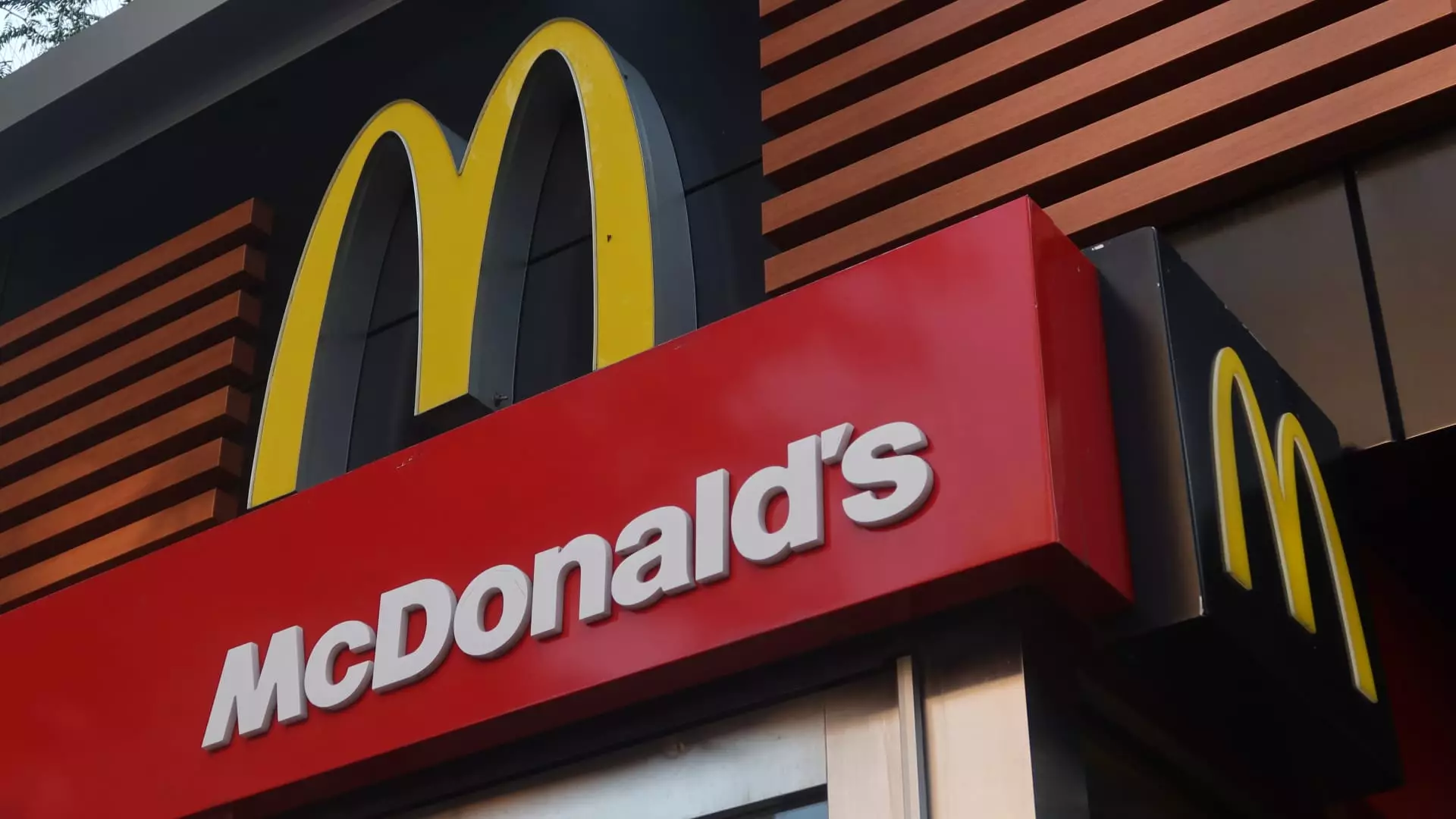In recent times, McDonald’s appears to be basking in a moment of apparent triumph, with quarterly earnings surpassing analyst expectations and stock prices nudging upward. On the surface, the chain’s strategic promotions and innovative menu items seem to have successfully fueled a rebound. But a closer, more critical look reveals a more troubling narrative: McDonald’s growth is built on fragile foundations that are increasingly at odds with the realities faced by its core consumers. Despite the headlines and soaring figures, the question remains — does this reflect genuine strength or an unsustainable facade concealing economic distress among low-income Americans?
The company’s reported improvements are undoubtedly impressive. Elevated earnings per share and robust revenue increments signal a company in a strong financial position. Yet, these figures should not be interpreted as signs of a thriving consumer base; rather, they highlight the influence of targeted promotions, marketing efforts, and strategic menu tweaks that temporarily boost traffic. Real sustainability, however, depends on the ability to serve a consumer base that is, paradoxically, under immense economic strain.
Are Promotions a Sign of Strength or Desperation?
McDonald’s management recognizes that its core low-income customers are facing ongoing financial hardships, which complicates their long-term sustainability. The company’s efforts to make its offerings more affordable—like the $5 meal deal and the return of snack wraps—are arguably stop-gap measures. While these initiatives may temporarily drive traffic, they essentially capitulate to the economic realities gripping millions of Americans living paycheck to paycheck. This strategy raises questions about the company’s long-term business model: Are they adapting to market conditions or merely scratching the surface of consumer vulnerability?
CEO Chris Kempczinski candidly admits the bifurcated nature of their customer base. High-income consumers are less dependent on value deals, while the low-income sector, which is critical to McDonald’s volume, is shrinking in visits. This acknowledgment should be a wake-up call for the industry. Once regarded as resilient, low-income consumers are now retreating from fast food outlets at an alarming rate, not because they no longer crave convenience or taste, but because they simply cannot afford to participate frequently.
Therefore, McDonald’s reliance on promotions and discount-driven strategies can be interpreted as a defensive mechanism, rather than a sign of robust, sustainable growth. This approach is inherently fragile, as it depends on keeping prices artificially low to sustain consumer visits, undermining future profitability and brand perception.
The Illusion of International Success
While the United States grapples with declining visits from its most vulnerable segments, McDonald’s international markets paint an ostensibly brighter picture. Growth in countries like Japan, China, the UK, and Canada underscores the company’s global reach. However, underlying this narrative is a skewed perspective that over-relies on regional differences in competition and market dynamics.
International markets often benefit from less saturated competition and the perception of better value, allowing McDonald’s to stand out more easily. Yet, this should not blind us to the fact that global economic inequities are growing, and the challenges faced domestically will eventually echo worldwide. The supposed strength in these markets might be more superficial than real, especially if global economic pressures intensify and those markets experience their own struggles with income disparity.
Furthermore, consumer value perceptions are fluctuating everywhere. Even in international markets, McDonald’s must tread carefully; mounting pressures for fair wages, inflation, and rising food costs threaten to erode any gains from increased same-store sales. The international growth figures are encouraging but should be viewed with cautious skepticism—high hopes may soon be tempered by the same economic currents that challenge the U.S. rebound.
The Grim Reality Beneath the Surface
What truly underpins McDonald’s current financial success is not a broad-based resurgence of economic vitality but a patchwork of tactical promotions designed to mask deeper issues. The chain’s focus on value, marketing, and menu innovation succeeds in short-term gains but fails to address or resolve the systemic economic decline afflicting its most loyal customers. The return of long-dormant menu items like Snack Wraps signals a recognition that consumer expectations are shifting toward affordability, not necessarily quality or service.
More troubling is the company’s cautious outlook. McDonald’s executives admit that traffic declines among the low-income segment persist, and that looming economic headwinds threaten to undermine what small victories have been achieved. Their rosy forecasts for the second half of the year seem more like hopeful projections than predictions rooted in unshakeable fundamentals.
In essence, McDonald’s current narrative of success is a carefully curated illusion. It glosses over a stark reality: the American consumer base that once flocked to fast food for affordability and convenience is shrinking, not because their tastes have changed, but because their economic circumstances have worsened. Unless the company truly reimagines its approach with a focus on equitable wages, sustainable pricing, and meaningful service, this so-called rebound risks being short-lived—just another fleeting moment of corporate optimism rather than genuine renewal.

